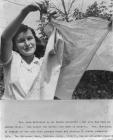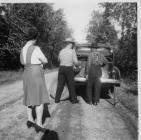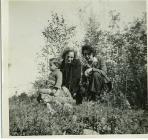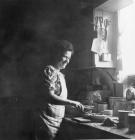15
Those of us living on the reserve never really noticed the Great Depression, as our lives stayedthe same as before. We used kerosene or coal oil lamps unless we had the luxury of the much
brighter Aladdin lamp for light. If there wasnĺt money for coal oil in the winter, sometimes
weĺd use a candle to eat supper by, and then go to bed. Winter nights were long.
17
We heated and cooked with wood and used outhouses.19
There was no hydro on the reserve until the 1950ĺs and then, it was a challenge to get money to wire our houses to hook-up.21
Most families got water from the lake all year for our needs, except for a few families that had a dug well and a pump.There was also a pump with good water at the second school on the reserve, located
at the old log museum building, which many families used.
23
We treated ourselves for every aliment, because medical services werenĺt available.People
made teas, salves, and poultices from balsam, cedar, spruce, goldenrod, slippery elm and many
other plants. We treated everything from infections, coughs, toothaches to burns and fevers.
People knew what part of the plants to use and when to gather them, and they gathered them
in a good way. Some people still know the medicines today.
25
In the early days on the reserve, we had mid-wives to help with births, and once doctorsbecame available, our women often said that the mid-wives were better at delivering babies.
27
At Indian Day School you could go up to senior 4th or grade eight.In those times we came to school in bare feet if we didnĺt have shoes, and in the winter, once it was cold enough, we could wear moccasins because they wouldnĺt get wet. In the winter it was hard for some of us to get to school. Sometimes the snow was so high that you couldnĺt even see the boxcars when the train went through. Some children had to walk up to three or four miles.
Some of us came on sleds that our dogs pulled.






